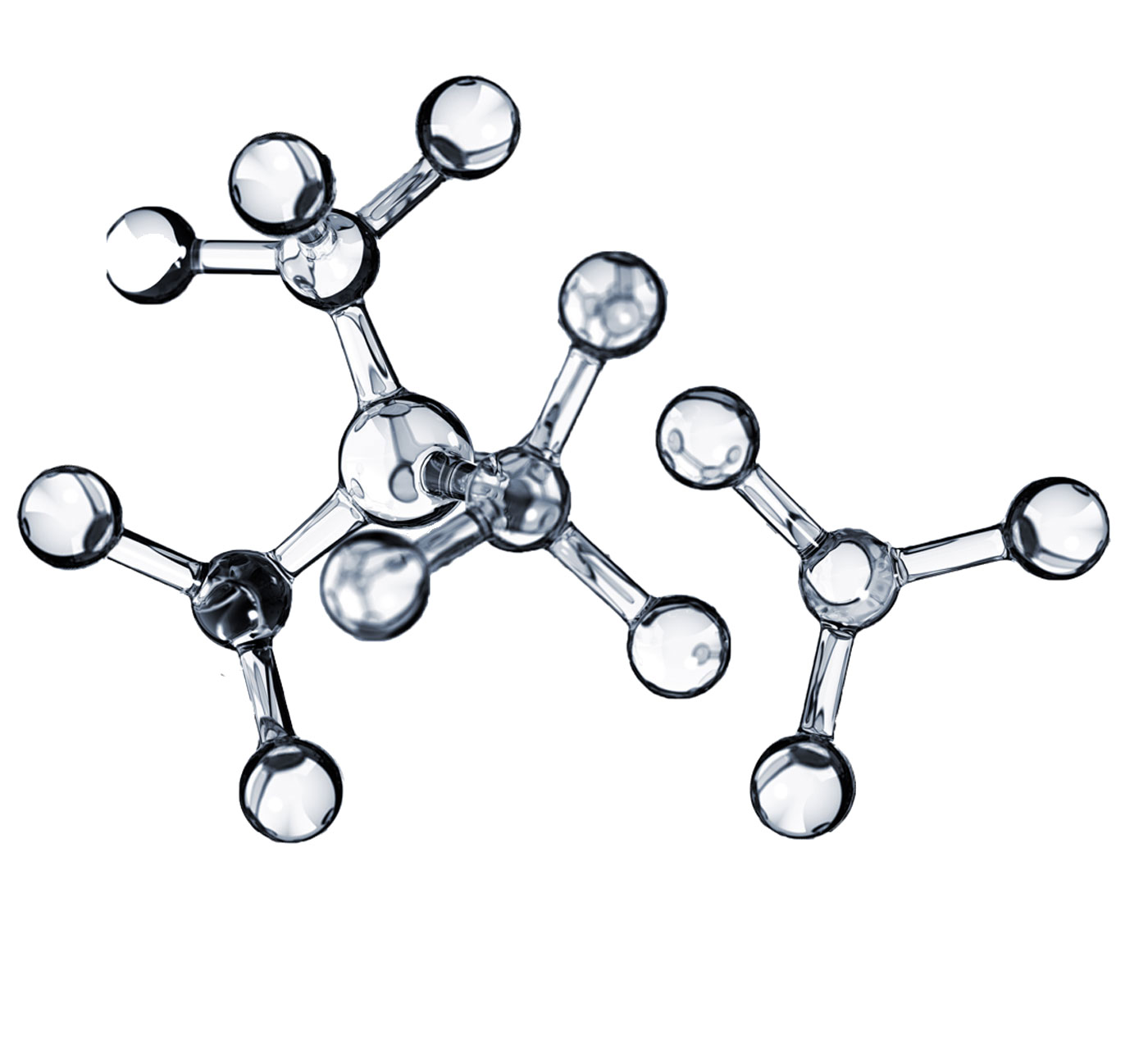




杀菌剂
※ 杀菌消毒是指能够杀灭RO系统内的细菌、病毒等微生物的化学药品。
※ 杀菌消毒剂种类很多。大体可分为普通杀菌剂和配方杀菌剂。按照化学性质可分为氧化性杀菌剂和非氧化性杀菌剂。氧化性的杀菌剂有次氨酸钠、二氧化氯、双氧水、臭氧等,非氧化性的杀菌剂有酒精、甲醛、戊醛、异噻唑啉酮、DBNPA、李胺盐等。
杀菌原理
※ 杀菌消毒的对象主要分为几大类:藻类、真菌、细菌、孢子虫、鞭毛虫、病毒、亚病毒等。卫生区的个体大小随藻类、真菌、细菌、病毒、亚病毒顺序逐渐变小。藻类、真菌、细菌的细胞有细胞壁、细胞膜、细胞核,属于真核细胞;而病毒则无细胞壁,只有细胞膜、细胞核,有的甚至细胞膜也没有,属于原核细胞;亚病毒则只是一团细胞核(DNA或RNA),也属于原核细胞。※ 当水中无机磷的浓度达到0.01ppm以上时,藻类便生长旺盛。藻类含有叶绿素,可以进行光合作用,吸收C元素,放出〇2和OH-,所以藻类滋长结果是水中的溶解氧量增大,PH上升,夏季藻类大量繁殖时可使PH值上升至9.0。藻类过度繁殖会产生污泥,污泥附着在容器内壁、管道内壁、RO膜膜面等表面便形成泥垢,因此藻类的清洗除了杀菌灭藻之外,还需要表面活性剂辅助剥离泥层。
※ 细菌的新陈代谢产物呈粘性,能把悬浮于水中的柜体颗粒粘合起来,形成粘泥而吸附于容器、管道内壁及RO膜膜面。真菌大量繁殖可形成棉团状,附着于金属表面、容器内壁、RO膜面、给水通道上,从而堵塞管道或通道。
※ 杀菌消毒药品多半是通过破坏生物细胞的某一部分组织(或者破坏细胞壁、细胞膜、细胞核),从而使其失去生物活性而死亡。不过由于微生物种类繁多,对它们的控制也比较困难,因此,根据不同微生物的特点而选用相应对症地药剂加以杀灭是一个消毒的基本选药原则,以一种药剂发挥万能作用的想法是不切实际的。在消毒过程中,有一个特点:越是简单的微生物,越容易发生异变,从而产生抗药性,为防止抗药个体的出现,经常将消毒剂加以适当变换是有益的。
杀菌剂的应用
※ 对于一个新的RO系统,最严格科学的制定消毒方案的方法是先探索清楚水中微生物的主要种类,再选用对症药剂,但该方法费时费力,在工程实施时不是很现实。因此,工程现场最简单可取的办法是,反复尝试各种最常见的广谱杀菌剂和配方杀菌消毒剂,找出效果可以接受的方案。同时,在有效的药剂之间,经常轮换使用,实为合理安排,避免抗药的个体出现。为减少水源对药剂杀菌效力的影响,建议膜清洗及杀菌用水执行下述水质标准。
产品特性
浊度:1-10NTU
色度:5-10
总溶解度:200
硬度(ppmCaCO3):50
碱度(ppmCaCO3):250
PH值:6-8
铁:<0.05
锰:0.1
铜:2
CI-:100
SO42-:100
硅:<10
微生物:无病菌
大肠杆菌:<1cuf/ml
Standard Plate 'Count:<500cfu/ml
Psychrotropes:<20cfu/ml
杀菌剂应用的注意事项
※ 确保杀菌剂的成分与RO膜兼容。
※ 选择杀菌消毒剂除考虑消毒效果外,还应兼顾其可能产生的负面影响。如氧化性药剂直接用于RO本体消毒,有氧化破坏危险存在;阳离子型的季胺盐等可能导致RO膜通量衰减等。
※ 食品制药等要求严格的行业不要忽视RO膜和压力容器之间存在死区,也可能长菌。
※ 消毒过程时间要确保足够,温度也应维持合适的水平,
※ 有毒废品液不能随便排放。
bactericide
* Sterilization refers to chemicals that can kill bacteria, viruses and other microorganisms in the RO system.
※ There are many kinds of disinfectants. It can be divided into general fungicides and formula fungicides. According to chemical properties can be divided into oxidizing fungicides and non-oxidizing fungicides. Oxidizing fungicides include sodium hypneonate, chlorine dioxide, hydrogen peroxide, ozone, etc. Non-oxidizing fungicides include alcohol, formaldehyde, valeraldehyde, isothiazolinone, DBNPA, limine salt, etc.
Bactericidal principle
※ The objects of sterilization are mainly divided into several categories: algae, fungi, bacteria, sporozoa, flagellates, viruses, subviruses, etc. The individual size of the sanitary area gradually decreased with the order of algae, fungi, bacteria, viruses and subviruses. The cells of algae, fungi and bacteria have cell walls, cell membranes and nuclei, which belong to eukaryotic cells. The virus has no cell wall, only the cell membrane, the nucleus, and some even have no cell membrane, which belongs to the prokaryotic cell. Subviruses are just a mass of nuclei (DNA or RNA), also belonging to prokaryotic cells. ※ When the concentration of inorganic phosphorus in water reaches more than 0.01ppm, algae will grow vigorously. Algae contain chlorophyll, can carry out photosynthesis, absorb C element, release ○2 and OH-, so the growth of algae results in the increase of dissolved oxygen in water, PH rise, and the PH value can rise to 9.0 when algae bloom in summer. Algae overpropagation will produce sludge, sludge attached to the inner wall of the container, the inner wall of the pipeline, RO membrane surface and other surfaces will form dirt, so the cleaning of algae in addition to sterilization and algae, but also need surfactants to help peel the mud layer.
※ The metabolic products of the bacteria are sticky, which can bond the cabinet particles suspended in water to form sticky mud and adsorb on the inner wall of the container, pipeline and RO membrane surface. A large number of fungi can form cotton clumps and adhere to metal surfaces, container walls, RO membrane surfaces, water supply channels, thereby blocking pipes or channels.
Bactericidal drugs are mostly killed by destroying a certain part of the tissue of biological cells (or destroying the cell wall, cell membrane, and nucleus), so that it loses its biological activity. However, due to the wide variety of microorganisms, the control of them is also more difficult, therefore, according to the characteristics of different microorganisms and the selection of appropriate agents to kill is a basic principle of disinfection, the idea that a drug plays a universal role is impractical. In the disinfection process, there is a characteristic: the simpler the microorganism, the more likely to change, resulting in resistance, in order to prevent the emergence of drug-resistant individuals, often the disinfectant to be properly transformed is beneficial.
Application of fungicides
※ For a new RO system, the most rigorous and scientific way to formulate a disinfection plan is to first explore the main types of microorganisms in the water, and then choose the right medicine, but this method is time-consuming and laborious, and is not very realistic in the implementation of the project. Therefore, the simplest and most desirable way to the engineering site is to repeatedly try a variety of the most common broad spectrum fungicides and formulated disinfectants to find an acceptable solution. At the same time, among the effective agents, the use of frequent rotation is actually a reasonable arrangement to avoid the emergence of drug-resistant individuals. To reduce the impact of water sources on the bactericidal efficacy of the agents, it is recommended that the following water quality standards be applied to membrane cleaning and bactericidal water.
Product characteristics
Turbidity :1-10NTU
Color :5-10
Total solubility :200
Hardness (ppmCaCO3):50
Alkalinity (ppmCaCO3):250
PH value :6-8
Iron :<0.05
Manganese :0.1
Copper :2
CI-:100
SO42-:100
Silicon :<10
Microorganism: No bacteria
E. coli :<1cuf/ml
Standard Plate 'Count:<500cfu/ml
Psychrotropes:<20cfu/ml
Precautions for fungicide application
※ Ensure that the composition of the fungicide is compatible with the RO film.
※ In addition to considering the disinfection effect, the choice of disinfectant should also take into account its possible negative effects. If oxidizing agents are used directly for RO body disinfection, there is a risk of oxidation damage; The cationic quaternary amine salts may cause the flux attenuation of RO film.
※ Food and pharmaceutical industries with strict requirements should not ignore the dead zone between RO membrane and pressure vessel, which may also grow bacteria.
※ The disinfection process time should be sufficient, and the temperature should be maintained at an appropriate level.
※ Toxic waste liquid can not be discharged casually.
Copyright 2020 - 2021 DESCSO. All Rights Reserved
Copyright 2020 - 2021 DESCSO. All Rights Reserved
添加专属客户服务
一对一回答您的问题

电话:025-86292120
Add dedicated customer service
Answer your questions one-on-one

Call:025-86292120
| Add a dedicated customer service |
|
|
Long press to identify and add |
Instrument manufacturer in the field of water quality analysis |
| Call:17521589555 | |
| Add a dedicated customer service |
|
|
Long press to identify and add |
Instrument manufacturer in the field of water quality analysis |
| Call:17521589555 | |